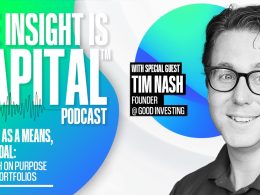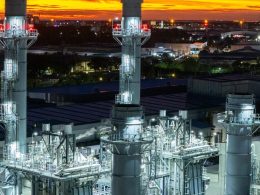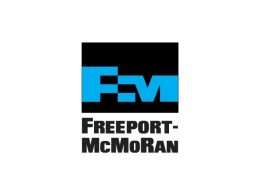by Cole Smead, CFA, Smead Capital Management
Dear fellow investors,
We want to ensure our investors know that we are standing side-by-side with them, as the stock market can do fairly illogical things from time to time. We’d like to discuss our three worst-performing securities in the US portfolio to help our investors understand why we are sitting on our hands and allowing our discipline to proceed. We are pounding the table at the opportunity within our grasp and wish to assure investors that we like what these circumstances are giving us. We believe they will guide us toward the successful outcomes that we have seen time and time again.
Merck (MRK)
Merck is one of the dominant pharmaceutical companies in the world, with a large expertise in oncology. The capital structure has about $25 billion of debt, net of cash, with a market cap of $218 billion as of today. Merck profits are still growing as they go from producing $18 billion in 2024 to likely north of $20 billion this year and the years moving forward. How can Merck underperform as much as it has in the last 12 months? The answer is not in how the business is operating. It’s in how investors choose to value it. Merck, beyond oncology, has an animal business that is plausibly worth $60 billion in a spin-off or third-party purchase. This is almost 30% of the current market capitalization of the business.
The company is currently trading at a price-to-cash flow multiple of 10.23 times. As the bear market of 2022 started roiling investors, stock market participants paid an average of about 17x cash flow for this business. That happened after the bear market reminded them why a consistent, staple business like Merck benefits them in hard times. This has been a stock that historically played a lower beta, defensive role in bad markets. Investors seem to have forgotten, as they did in 2021, at the current price/multiples on this company. We have not forgotten and can see how attractive this business is in the current environment.
APA Corp. (APA)
APA is an oil and gas company that is focused in the Permian, Egypt and has a prospective opportunity in Suriname and Alaska. Their capital structure is one of the most attractive in the oil business as they pay about 5.63% on their debt with an average duration of 10.35 years. If you look at the maturity schedule below, they have nothing more than $1 billion due over the next five years. We are pointing this out to our investors to show that the next five years of potential outcomes are not dependent on the capital structure. APA currently produces over $1 billion of free cash flow per year, despite the weakness in oil at the current spot price of around $66-$67.
This is attractive to own because we believe the oil market is far tighter than stock market participants understand. We are no longer in the “drill, baby drill!” era of the 2010s back when Trump said it and the producers drilled. We are in the 2020’s version of the oil business where the President says “drill, baby drill!” and oil executives cringe. We have been focused on the supply of this industry as we believe we are in the twilight of the US shale growth era. Harold Hamm at CERAweek in Houston said that no one will drill below $80 a barrel. We believe he’s right and the billions of wealth he’s created is good evidence of his expertise in matters of oil prices.
Beyond this industry dynamic, we have the opportunity to buy and own APA while it trades for less than the invested capital of the business, yet provides returns on invested capital in the low-to mid-teens. I mentioned Suriname as an asset of theirs. It is valued at zero today by investors. We believe low assumptions for oil prices, returns on capital, and the valuation of this company will produce a successful outcome. If that doesn’t entice you enough, Chansoo Joung, a director at APA, bought $1.368 million of the stock yesterday (Thursday, 4/3). He’s been a director since 2011. It seems he believes the same thing we do.
Lennar (LEN)
Historically, Wall Street’s view of homebuilders has been highly influenced by interest rates. Since mortgages are priced based on the 10-year Treasury yield, the cost of a mortgage has climbed from the low mortgage rates during the pandemic to a level not seen since the 1990s. Housing supply has gone from being the highest in US history in 2007 to the lowest available inventory on record in recent years. It’s interesting to us that higher rates haven’t alleviated the housing supply issue. Like oil above, studying the supply of homes is the key variable to understanding the tailwind of the economics in this industry.
Lennar has zero net debt. A further thing you need to know is the largest shareholder is Stuart Miller, whose family has driven this business to the success it has had today. We love strong insider ownership and Mr. Miller is great evidence of this. With no debt and an ideal shareholder, the capital structure couldn’t be more solid for our investors.
The business is likely to generate about $2.5 billion in free cash flow. This isn’t as high as the peak amounts of free cash flow they produced in 2022 and 2023 at lower rates. Again, even with a more somber view of the year ahead, based on free cash flow compared to their book value, the company is producing a return on equity in the neighborhood of 30%. Businesses that can maintain those returns over long periods of time have had a tendency to become long-term winners in the stock market.
One more thing to add on Lennar: they just spun out their land business, Millrose, so that the stock market would look at Lennar, the homebuilding operations business, on a standalone basis without the land. Homebuilders that don’t own land trade even now at 5 times book value. Lennar is trading at 3.5 times book. With great returns on capital, a great partner in the business and nothing remarkable in valuation, we believe the odds are with our investors.
As we said at the start, these are our three worst performing securities over the last 12 months. While underperformance is never preferred, it is required in all great long-term disciplines. The employees of our firm have been adding to their holdings recently. We believe our investors should do the same as the reward will be what we have all been seeking. There may well be more bumps in the road on the journey, but we remain steadfast that our ultimate destination will be worth the turbulence.
Fear stock market failure,

Cole Smead, CFA
The information contained in this missive represents Smead Capital Management’s opinions, and should not be construed as personalized or individualized investment advice and are subject to change. Past performance is no guarantee of future results. Cole Smead, CFA, CEO and Portfolio Manager, wrote this article. It should not be assumed that investing in any securities mentioned above will or will not be profitable. Portfolio composition is subject to change at any time and references to specific securities, industries and sectors in this letter are not recommendations to purchase or sell any particular security. Current and future portfolio holdings are subject to risk. In preparing this document, SCM has relied upon and assumed, without independent verification, the accuracy and completeness of all information available from public sources. A list of all recommendations made by Smead Capital Management within the past twelve-month period is available upon request.
©2025 Smead Capital Management, Inc. All rights reserved.
This Missive and others are available at www.smeadcap.com.















